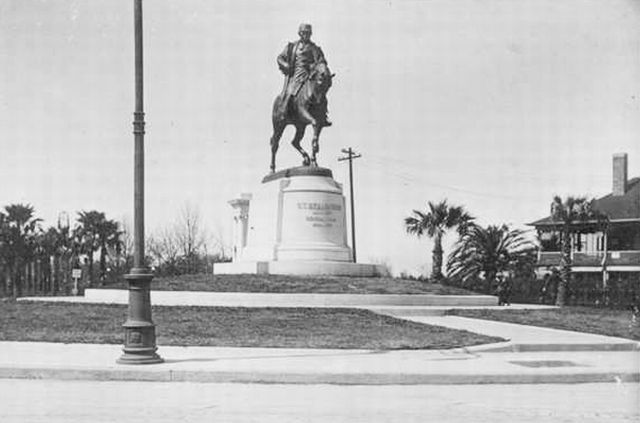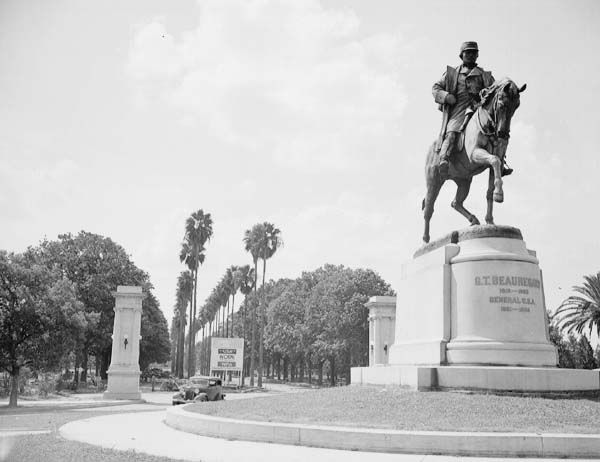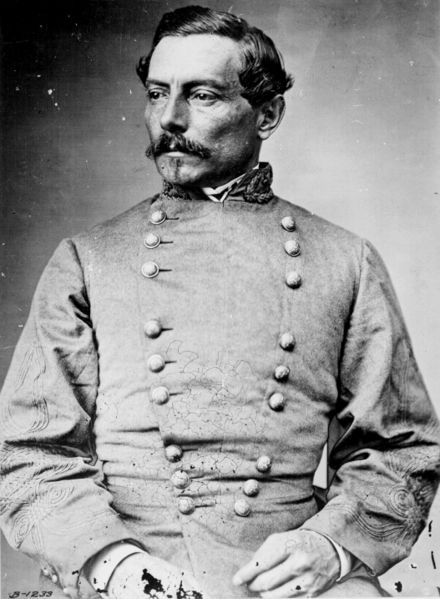|

|
| 1920's -- Source:http://nutrias.org/photos/johnson/hdj47.htm |
Esplanade Avenue at Bayou St. John/entrance to the park near New Orleans Museum of Art.
This sculpture was created by Alexander Doyle, who also created the Margaret Haughery and Robert E. Lee monutments.

|
| 1938 -- Source: http://nutrias.org/photos/wpa/images/32/325202.jpg |

Pierre Gustave Toutant de Beauregard
Beauregard was born at the "Contreras" plantation in St. Bernard Parish, outside of New Orleans. Beauregard briefly entered into politics in his home town, and was narrowly defeated in the election for Mayor of New Orleans in 1858. He was chief engineer in charge of drainage in New Orleans from 1858 to 1861, and directed the building of the Federal
customs house. He then returned to teach at West Point, where he rose to become the superintendent of the Military Academy in January 1861, but resigned after only a few days when Louisiana seceded from the Union.
Beauregard entered the Confederate Army as a brigadier general in March 1861, but was promoted on July 21 to be one of the eventual eight full generals in the Confederate Army; his date of rank made him the fifth most senior general. He recommended stationing strong forces
to protect New Orleans, but was overruled by President Jefferson Davis; this started friction between Beauregard and Davis that would only intensify as years progressed.
After the war, Beauregard spoke in favor of civil and voting rights for the recently freed slaves, an opinion not common among high-ranking Confederates. Beauregard and Jefferson Davis published a series of bitter
accusations and counter-accusations, blaming each other in retrospect for the defeat of the Confederacy.
Beauregard became involved in promotion of railroads, both as a company director and a consulting engineer. He was the president of the New Orleans, Jackson & Mississippi
Railroad from 1865 to 1870, and president of the New Orleans and Carrollton Street Railway, 1866 to 1876, for which he invented
a system of cable-powered street railway cars.
Beauregard served in the government of the State of Louisiana, first as adjutant general for the state militia, and then less successfully as manager of the Louisiana Lottery. Though considered personally honest, he failed to reform corruption in the Lottery system.
P.G.T. Beauregard died in New Orleans. He is buried there in Metairie Cemetery.
|

